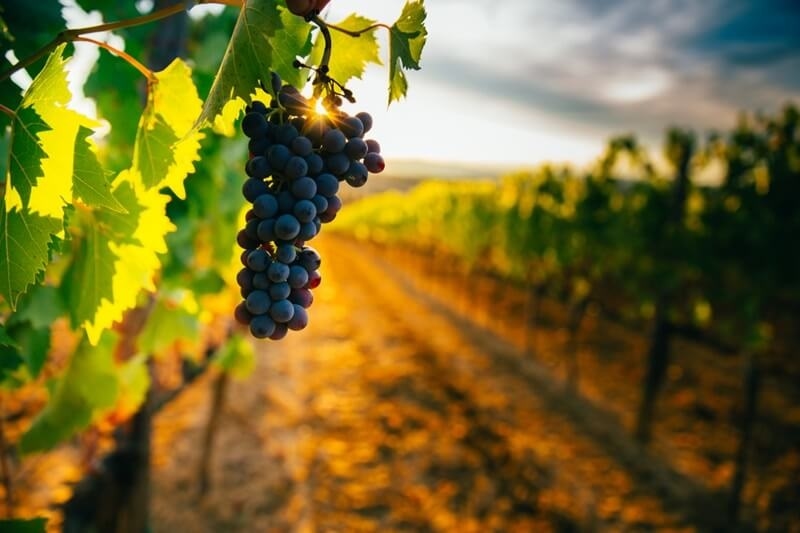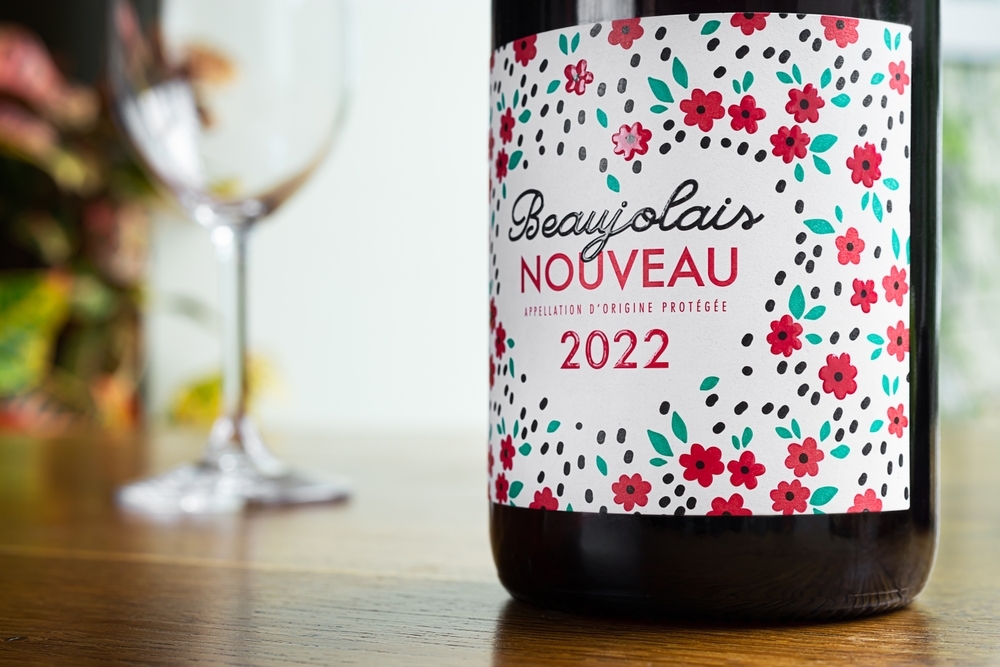Learn Reasons How Climate Affects the Taste of Wine Grapes

Broadly speaking, one of such factors is the climate, which plays a huge role in the flavor, aroma, and texture of a wine. Temperature, sunlight exposure, rainfall, and soil composition-and the changes those conditions might make in a year-all contribute to developing grapes and, ultimately, the finished wine in your glass. The winemaker or wine lover should understand the relationship between climate and grape cultivation. Each grape variety has specific climate conditions that must be achieved; these have a huge impact on the fruit that grows-with regard to sugars, acidities, tannin structure, and aromatic profiles. Hence, a Chardonnay from the incredible region of Chablis in France tastes completely different from one grown on the hot valleys of California.
Best Climate for Wine Grapes
The best climate for wine grapes is, again, particular to the variety that is being cultivated. But, in general, most wine-producing areas lie between 30 and 50 degrees latitude in both the Northern and Southern hemispheres. This is generally the zone in which one finds the right combination of warmth, sunlight, and seasonal variation that allows grapes to ripen fully without sacrificing essential acidity.
Learn More: Everything You Need to Know About Romanian Wine Regions
Grapevines grown in temperate climates usually have warm yet not extremely hot summers; as long as they are warm enough to allow the vines to ripen their sugars, they will have a very good climate. The best climate would produce long growing seasons so that grapes can be ripened slowly and develop complex flavor profiles. Well-drained soils are also very important because too much water dilutes flavors and leads to fungal diseases.
Different climates will therefore offer different styles of wine. Cooler climates produce high-acid, aromatic, and delicate wines; on the contrary, warmer regions produce full-bodied, ripe, and fruit-forward wines. The climatic interplay with the grape variety will determine whether a wine is crisp and refreshing or bold and powerful.

How Climate Affects Wine Grapes
1. Temperature and Heat Accumulation
Temperature is the most important factor in grape growing. The amount of heat a vineyard receives during the growing season determines how quickly the grapes ripen. In warm climates, such as California’s Napa Valley or Australia’s Barossa Valley, grapes ripen more quickly due to high temperatures. This leads to higher sugar levels, which translate into wines with higher alcohol content and bold, fruity flavors. However, excessive heat can cause over-ripening, resulting in wines that taste overly jammy or lack acidity.
The ripening process is slower in cooler climates, such as Burgundy in France or Germany’s Mosel region. This allows the grapes to retain more acidity and develop delicate aromas and flavors. The resulting wines tend to be lighter in body, with bright acidity and complex aromatic profiles. Temperature fluctuations between day and night—known as diurnal variation—also play a significant role. In regions with high diurnal variation, such as Argentina’s Mendoza, warm days help the grapes develop sugar, while cool nights preserve acidity. This balance is crucial for creating structured, well-balanced wines.
2. Sunlight Exposure and Photosynthesis
Light exposure and photosynthesis go hand in hand. Sunlight is vital for photosynthesis, whereby grapevines utilize sunlight to create energy. The amount of sunshine in a vineyard directly impacts sugar content, tannin production, and the whole ripening process. Greater sunlight exposure fosters the ripening of grapes with higher sugar levels, resulting in fuller-bodied wines with greater levels of alcohol.
Less sunlight exposure, usually in cooler or cloudy regions, leads to grapes with low sugar content and high acidity and lighter, fresher wines. A south-facing slope in the Northern Hemisphere or a north-facing slope in the Southern Hemisphere is vital in vineyards for direct sun exposure as it helps with the ripeness. This is even more beneficial in the cooler regions, where warmth and light are very much needed for grape maturation.
3. Rain and Water Availability
Rainfall is another critical factor in grape growing. Both excessive rain and merciless drought can influence the quality of grapes. Excess rain during the growth stage of grapevines may dilute the flavor of the grapes and magnify the risk of fungal attacks like mildew and rot. This condition is a major concern in regions like Bordeaux, where rain is heavy. On the other hand, little rain means stress, particularly in hot environments. Some stress is needed for concentrated flavors, while prolonged drought means loss of yield and harm to the health of the vines. Controlled irrigation schemes are an answer to the management of water availability in many wine regions, such as California, South Australia, and Spain.
4. Soil Composition and Drainage
Although soil is not strictly a climatic factor, it plays a crucial role in determining how vineyards fare under the climatic regime. Different soils determine the capacity of vines for water and nutrient absorption. Well-draining soils, like gravel and limestone, assist in the regulation of dissolved water so that there are no extra water deposits, which could result in flavor dilution. Soils rich in clay, on the other hand, can be beneficial in dry climates, whereas they can cause complications in wet conditions. Volcanic and mineral-rich soils grant unique mineral signatures to the wines found in places such as Santorini, Greece, or Mount Etna in Sicily.
5. Seasonal Variation and Frost Risk
The changing seasons also influence grape development. A long growing season allows grapes to ripen fully and develop complex flavors. However, extreme seasonal changes can pose challenges.
Spring frosts can damage young buds, reducing yield. Summer heatwaves can cause grapes to ripen too quickly, affecting balance. Early autumn frosts can halt ripening before the grapes reach full maturity. Winemakers often use techniques like covering vines or using wind machines to mitigate frost damage and protect their crops.
Check This Out: Exploring the Impact of Climate Change on U.S. Vineyards
Grape Varieties and Their Climate Requirements
1. Cabernet Sauvignon
The grape variety Cabernet Sauvignon prefers warm to hot climates where it ripens fully and develops bold flavors. These include Bordeaux, Napa Valley, and Australia's Coonawarra. In cooler climes, it suffers from incomplete ripeness, resulting in herbaceous flavors instead of rich fruit notes.
2. Pinot Noir
Pinot Noir describes a delicate grape grown under cool to moderate climates in Burgundy, Oregon, and New Zealand. It needs proper warmth in the daytime and cool at nighttime to maintain its high acidity and develop earthy complex flavors. Too much heat removes its elegance and makes it taste too fruity.
3. Chardonnay
This very flexible grape can really fit into almost any climate. In cool places such as Chablis, France, Chardonnay develops crisp acidity and citrus flavors, while in warmer areas such as California, riper and tropical fruit characteristics emerge, producing rich and buttery notes if aged in oak.
4. Riesling
Germany's Mosel and Alsace of France are the ideal cool climates for growing Riesling. It has a long growing season for development of the high acidity and floral aromas that it is noted for. Warmer growing areas will lose some of this freshly characteristic citrus quality.
5. Syrah/Shiraz
Hot places are where Syrah, or referred to as Shiraz in Australia, does well, unlike others. Such places include the Rhône Valley and Barossa Valley. It will give you a nice ripe blackberry, syrupy spiciness, and peppery flavor combination. In cooler temperatures, the flavors are more savory with pepper notes.
How Climate Influences Grape Flavor Profiles
Climate plays a defining role in the flavor of grapes. Here are five key grape varieties and their typical flavor profiles:
- Cabernet Sauvignon – Blackcurrant, cherry, cedar, and dark chocolate
- Pinot Noir – Red berries, cherry, mushroom, and spice
- Chardonnay – Green apple, pear, vanilla (if oaked), citrus, and butter
- Riesling – Lime, peach, apricot, honey, and floral notes
- Syrah/Shiraz – Blackberry, plum, pepper, smoked meat, and dark chocolate
Also Read: 10 Common Wine Myths and Facts Every Enthusiast Should Know
Conclusion
Climate is one of the most important influences on wine grapes, shaping everything from sweetness and acidity to tannin structure and aroma. By understanding the role of climate, wine lovers can better appreciate why a wine from one region tastes so different from another. Whether you prefer a bold Cabernet or a crisp Riesling, the climate where the grapes were grown has shaped every sip.
This content was created by AI
No keywords available
-1717753922-r.jpg)


